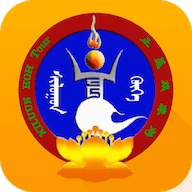Linux系统登录欢迎辞
发布时间:2014-09-05 13:50:47作者:知识屋
Linux系统登录欢迎辞
/etc 文件夹中有两个配置文件 issue 和 issue.net,用于文本设备登录系统时显示的欢迎辞的格式。
issue 是本地,不用多说,issue.net 肯定就是远程啦!
这两个文件允许使用转义序列(escape sequence),当系统遇到escape sequence的时候会自动替换成相应的信息,比如:/n 代表主机名。
完整的转移序列列表如下(此列表摘自:man agetty,因为此issue由agetty负责解释):
b Insert the baudrate of the current line.
d Insert the current date. 本地端的当前日期
s Insert the system name, the name of the operating system. 操作系统的名称
l Insert the name of the current tty line. 显示第几个终端机的接口
m Insert the architecture identifier of the machine, eg. i486. 显示硬件的等级(i386/i486/i586/i686....)
n Insert the nodename of the machine, also known as the hostname. 显示主机的网络名称
o Insert the NIS domainname of the machine. 显示 domain name
O Insert the DNS domainname of the machine.
r Insert the release number of the OS, eg. 1.1.9. 操作系统的发行版本 (类似 uname-r)
t Insert the current time. 本地端的当前时间
u Insert the number of current users logged in. 登录的用户数量
U Insert the string "1 user" or "<n> users" where <n> is the number of current users logged in.
v Insert the version of the OS, eg. the build-date etc.操作系统的版本
CentOS 中,两个文件的内容一致,如下:
CentOS release 6.1 (Final)
Kernel /r on an /m
系统登录成功后的欢迎辞则是:/etc/motd,“motd”是“Message Of ToDay”的缩写,通常这个文件是空的。
* 在 CentOS 6.4 下,motd 文件好像不支持转义序列。
我们可以通过配置这个文件在用户登录成功之后,跟当前用户打个招呼:“Hello, welcome back!”,也可以警告一下对系统图谋不轨的“坏家伙”。
通过配置这两个文本,可以定制登录时的个性化信息,如果再配上脚本来处理,就可以实现动态的显示更多内容,比如说时间提醒、系统公告等,那就更有意思了!
(免责声明:文章内容如涉及作品内容、版权和其它问题,请及时与我们联系,我们将在第一时间删除内容,文章内容仅供参考)
相关知识
-

linux一键安装web环境全攻略 在linux系统中怎么一键安装web环境方法
-

Linux网络基本网络配置方法介绍 如何配置Linux系统的网络方法
-
Linux下DNS服务器搭建详解 Linux下搭建DNS服务器和配置文件
-
对Linux进行详细的性能监控的方法 Linux 系统性能监控命令详解
-
linux系统root密码忘了怎么办 linux忘记root密码后找回密码的方法
-
Linux基本命令有哪些 Linux系统常用操作命令有哪些
-
Linux必学的网络操作命令 linux网络操作相关命令汇总
-

linux系统从入侵到提权的详细过程 linux入侵提权服务器方法技巧
-

linux系统怎么用命令切换用户登录 Linux切换用户的命令是什么
-
在linux中添加普通新用户登录 如何在Linux中添加一个新的用户
软件推荐
更多 >-
1
 专为国人订制!Linux Deepin新版发布
专为国人订制!Linux Deepin新版发布2012-07-10
-
2
CentOS 6.3安装(详细图解教程)
-
3
Linux怎么查看网卡驱动?Linux下查看网卡的驱动程序
-
4
centos修改主机名命令
-
5
Ubuntu或UbuntuKyKin14.04Unity桌面风格与Gnome桌面风格的切换
-
6
FEDORA 17中设置TIGERVNC远程访问
-
7
StartOS 5.0相关介绍,新型的Linux系统!
-
8
解决vSphere Client登录linux版vCenter失败
-
9
LINUX最新提权 Exploits Linux Kernel <= 2.6.37
-
10
nginx在网站中的7层转发功能
























